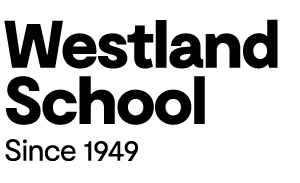Group Two Curriculum Snapshot
On May 15, Karen was reading the chapter book The Cuckoo Child, by Dick King-Smith to the Group Two students. There were moments throughout the 20-minute read that modeled – again and again – the skills effective readers do regularly: make predictions, ask questions, make connections (text to text, text to world, and text to self), appreciate an author’s craft, self-correct, notice vocabulary, and visualize images.
Karen: Do you think this book was written recently?
Student: No, a long time ago...
Karen: Okay we're going to talk about that now, why do you think that...
Student: Awww...I want you to finish reading it first! [politely begging]
Karen: Okay...I'll keep reading… “It might count in your favor” - Wait...didn't we just hear that line? [Reads on] "I stole one of your ostrich eggs"
Student: [Interrupting] This is scary! Oh no! [Student runs to sit on Ella's lap...but continues to stay with the reading]
Karen: What is the author doing here when he calls the director's hand “a paw”? What is he making you think of? [She gives students time to think and then reads on, saying the line, “Oliver had grown six more inches.”]
Several Students: What!? Wow!
Karen: [Reads on and pauses at the line, “He had a lump in his throat.”] He's telling Oliver that it's the last time they'll see each other. Is the lump in his throat about being afraid? [Students nod, one says “yes,” and another says “sad.”] Could you get a lump in your throat being afraid and sad? [Students respond in unison, “Yes!”] What if you're happy? [“No: the students respond, as if the notion is ludicrous.]
Student: I get a lump in my throat when I'm happy. Can we read a little more?
Karen: [She reads] “Not a truck or a van, but a red sports car"
Students: “What the what!" - "What the heck?!" - "I can't believe it's a red sports car!"
Student: Can I see the car?
Karen: You have to picture it in your mind...remember that's what we do with chapter books...even though there's a picture, it's up to you to picture it. [She reads on.]
Karen: Wait, sometimes I have to re-read it, because I didn't do the tone correctly. It said, “He said, ‘Hello’ in a flat voice.” And I did it in a friendly voice. Sometimes I have to reread passages.
[Karen reads another passage, “They end up with Bowed Legs"]
Student: What does that mean?
Student: Their legs bend in a way they shouldn't bend. [Getting chatty talking about bow legs]
Karen: Group Two, we have just a little bit more in this chapter.
Student: Let's read!
Karen: [Karen reads some more, closes the book] That's the end of chapter 11. [Collective sigh.]
Karen: Some people thought The Cuckoo Child was written a long time ago.
Student: Not so recently, but not so long ago, like 2010 I think.
Karen: What makes you think that?
Student: I read a lot of old books, and they don't seem like this
Karen: Is it the language?
Student: No
Karen: [To another student] What is your idea?
Student: The language - maybe they don't use the language like that a long time ago. A lot of times they didn't have much time to write books back then…
Karen: So you think this book would have taken place a long time ago…
Student: Not a VERY long time ago, like the 1990's...
Karen: What do you think? [to a student raising their hand] I think it's in the middle [Children chiming in "Me too, me too. In the middle."]
Karen: Is there anyone thinking this book was written a long time ago?
Student: I don't know why, I think this book was written in 2011. [At which point a child falls off his chair, flashes two hang loose signs, and sits back down like nothing happened. Head of School notes she will now handle all future falls in similar fashion.]
Karen: 2011. When were you born? [Students respond] You think this was written in your lifetime? I hear people saying "yes" a lot... It's interesting to think about if something is older than you or if something was written in your lifetime. There's a word for that - it's called “contemporary” Does anyone think it was written a LONG time ago?” [Students respond.]
Should we find out when it was written? You know you can find out when every book is written if you look on title page, and then on the back there's really small print (just like our field guides) that has the year. Okay let’s look. 1993. What do you all think now?
This chapter book session was pure gold. If we think above to highly effective reading strategies, we can note that each of the skills was present in this short session. Making predictions, check. Asking questions, check. Making connections, check. Appreciating an author’s craft, check. Self-correcting, check. Visualizing images, check. And noticing/learning vocabulary, check. As I listened to Karen read, I heard such delicious words like, “gosling,” “vulpine,” “ginger-bearded,” “pestered,” “hazard,” “cowardly,” “foraging,” “flaked-maize,” “youngish,” and of course “bowlegged” and “contemporary.” When children learn how to read,, it is essential that they learn through direct instruction the rules and phonetic patterns that build the actual words. What’s also essential is that they “live in the water” of reading - a whole language approach. When Karen closed the book and the children sighed, perhaps that’s the greatest gift of all. The desire to find out “what’s next?” and to feel the glorious pain of having to wait until next time.


